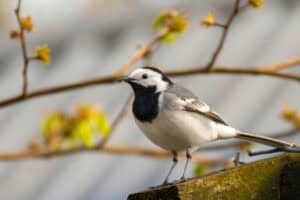Spring is around the corner, and it's time to upgrade your bee-friendly garden by adding more nectar-containing plants and scented flowers.

Bees need access to a variety of flowering plants to provide food for their colonies at different times of the year. Healthy honeybee colonies are vital for food security.
The honeybee is the main pollinator of many agricultural crops, such as deciduous fruit, all oil seed crops, vegetables and many fodder plants.
A study by the SA National Biodiversity Institute reveals that eucalyptus trees, certain crop species such as sunflowers, canola, citrus and lucerne, as well as indigenous trees and shrubs, flowering plants and wildflowers are critically important for honeybees to build strong colonies.
Create your own bee-friendly garden

Your garden should contain indigenous and exotic plants as they provide good pollen and nectar at different times of the year.
Try to have a minimum of three or four different species flowering throughout the year and try to select flowers in a variety of shapes and sizes. Plant several of each type of plant close together in patches.
Even small townhouse and balcony gardens can contribute by providing a valuable feeding station in a built up urban environment.
Bees like diversity and patches of single species flowers. They also prefer informal, random gardens to formal manicured gardens.
Tips for attracting bees to your garden
- If you have space issues, choose plants with blue, yellow and purple flowers as bees prefer these colours.
- Choose scented flowers rather than unscented ones.
- Include bee-attracting indigenous plants.
- Plant flowers that bloom at different times of the year so that there are pollen and nectar sources throughout the year.
- Provide shallow containers of water with landing places as birdbaths and ponds are too deep for bees.
- If you need to use insecticides, choose nontoxic products and spray plants before or after they bloom.
Choosing your plants
Indigenous trees recommended by beekeepers are sweet thorn, karee, bush willow, weeping wattle and tree fuchsia.
Colourful indigenous plants include agapanthus, aloes, asparagus fern, Cape violets, clivia, euryops daisy, felicia, gazania, carpet geranium, ribbon bush, lion’s ear, osteospermum, butterfly bush, Cape honeysuckle and vygies.
Many non-indigenous plants produce nectar profusely. These include alyssum, aster, calendula, forget-me-not, iris, nepeta, hollyhock, Michaelmas daisies, lavender, poppies, primula, salvia, sedum, sunflower and zinnia.
For your herb garden, plant borage, chives, fennel, mint, marjoram, oregano, rosemary and thyme.
For more news your way, download The Citizen’s app for iOS and Android








